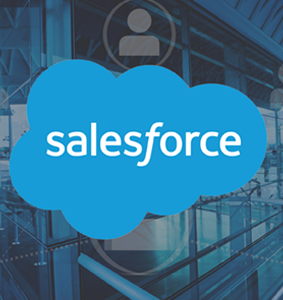Denodo

An Introduction to Denodo for Data Virtualization
Enterprise data is available in more forms than most IT departments know how to handle in the modern world. This comprises information kept in numerous distinct locations, such as emails, logs, and both organized and unstructured data. Therefore, how can we manage the data in all of its varied formats and obtain a cohesive overview of the distant data? Data virtualization, a catch-all word for any master data management strategy that enables data retrieval and manipulation regardless of format or location, is what we employ to get around this complexity.
With the speed at which technology is developing, it is critical to extract instantaneous information in order to make business decisions in real time. It is expected that organizational data will take many different forms. Big data, social media, cloud, and web data are just a few examples. The constant addition of new data sources brought forth by efforts like cloud-first, app modernization, and big data analytics presents a challenge for IT teams. They rely on antiquated integration methods, which are expensive, time-consuming, and resource-intensive. Introducing the data virtualization technology from Denodo could aid in overcoming the current complexity, or at least reducing it. It’s the quickest method for getting access to all company data without having to worry about possible difficulties obtaining data from various sources. Without moving it to a central repository, data virtualization provides a single point of access to all company data.
Why Data Virtualization?
- Data virtualization involves neither moving nor replicating data. Users save time and money as a result of the significantly faster data retrieval process.
- Since the data stays in its original location, data virtualization makes it much easier for heterogeneous data to integrate and interact. Additionally, it eliminates the semantic gap that separates structured and unstructured data.
- Data administration gets simpler and overall data quality increases.
- It offers BI that is more flexible.
Data Virtualization Tools
There are several platforms available for virtualizing data. Denodo will be used as an example by Lean IT to highlight the features and advantages of data virtualization.
- Red Hat JBoss Data Virtualization
- Denodo
- Data Current
- TIBCO Data Virtualization
- Oracle Data Service Integrator
Denodo’s Data Virtualization Tool
Without duplicating any data, the Denodo Platform provides real-time access to integrated data from a variety of an organization’s data sources. This is one of the advantages of data virtualization. In the quickest manner possible, it provides sophisticated capabilities including self-service data discovery, sophisticated caching, and dynamic query optimization.
How It Works
Configuring Denodo’s Virtualization Platform with Several Data Sources
Several data sources, some of which are listed below, are connected to Denodo’s Data Virtualization Platform by Lean IT.
- Oracle
- Spark-sql and Hive
- NoSQL Database (Mongo DB and HBase)
- Azure Blob Storage.
- XML Files
Organizations can obtain a more comprehensive understanding of their company data because to Denodo’s adaptability in connecting to a wide range of sources, which opens the door for more powerful analytics capabilities. We will demonstrate how to do ETL and data analytics as well as how to integrate various sources using Denodo’s Data Virtualization Tool.
The Critical Capabilities of Data Virtualization
- Adaptable Integration of Data: From real-time federation to selective materialization (caching, aggregation-aware summaries), complete replication (ETL, ELT, micro batching), and streaming, flexibility can be tailored to meet a variety of use case requirements.
- Global Networks and Information Services: Readily establishes connections to a variety of data sources and permits publishing through common interfaces such as SQL, JSON, REST, and GraphQL APIs for simple sharing.
- Integrated Governance and Security: Permits extensive data activity audit records, centralized governance, and fine-grained security controls that apply to any data and any access mode.
- Smart Query Development: A single application that combines the strength of an AI-powered query accelerator, a next-generation MPP engine, and the greatest multi-source query optimizer available for high-performance data access.
- Extensive Semantics: Provides a data catalog with AI-driven suggestions and collaborative tools that make use of business semantics to adjust to the demands of data consumers, making data discovery easier.
- Logical Abstraction of Data: Represents all data assets in an abstracted manner, independent of the data’s original source systems.
The Business Impact of Data Virtualization, Using the Denodo Platform
- Growth in Profits: Denodo Platform gives your business the data it needs to boost sales and cut expenses.
- Mitigation of Risk: Real-time data delivered by the Denodo Platform helps manage company risks and lower compliance fines. Furthermore, the quick-iteration and rapid evolution of the Denodo Platform assist lower the risks associated with IT projects.
- Time-to-Value Quickening: Business benefits are realized sooner thanks to the Denodo Platform’s ability to expedite data-driven project completion. An additional benefit of time-to-solution is lower project expenses.
- Technology Streamlining: The Denodo Platform maximizes the return on investment made in servers and storage. Furthermore, significant savings on hardware and governance result from reduced data replication.
- Employee Output: Data engineering productivity is increased by the simple, highly productive design and development environments offered by the Denodo Platform.
Data Virtualization Helps Everyone in the Organization to Succeed
- DATA STEWARDS: In order to offer consistent, safe, and regulated data, data stewards may better develop and enforce business data models and standards with the use of data virtualization.
- CIOS AND CTOS: The flexible integration method of data virtualization helps CIOs and CTOs to react more rapidly and cost-effectively to ever-changing business needs.
- ANALYTICS LEADERS: The data required to power analytics and apps may be accessed more quickly and easily thanks to data virtualization.
- DATA SCIENTISTS AND ANALYSTS: Data scientists and analysts can instantly access all the data they want, in the format they want, thanks to data virtualization.
- DATA ARCHITECTS: The data required to power analytics and apps may be accessed more quickly and easily thanks to data virtualization.
- DATA ENGINEERS: Data virtualization makes it possible for data engineers to produce more data views more quickly, increasing business value realization in the process. It is also a very easy and productive tool to use.
Data Virtualization Enables Modern Data Architectures and Use Cases

Organizations must accelerate data engineering efforts to reduce time-to-value as the demand for data increases. The majority of existing methods lead to reinvention, are excessively expensive and lengthy, and can produce uneven results. On the other hand, data virtualization offers a flexible method for producing data products. Data products can be provisioned to customers without replication and managed centrally with data virtualization. A great starting point for contemporary distributed data architecture and use cases is data virtualization.





